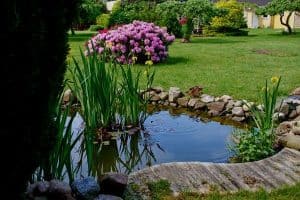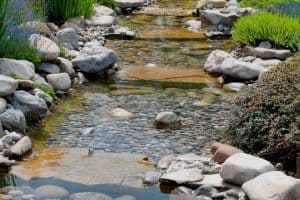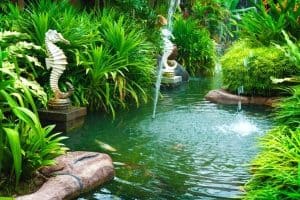There are many things to consider when you’re planning a new backyard pond and there are a lot of things that can go wrong.
Ponds can be expensive to install and difficult to fix, so it’s important to get it right the first time.
Here are 10 things to keep in mind before you start building your new backyard pond.
This post about pond mistakes contains affiliate links. Please read the disclosure for more info.
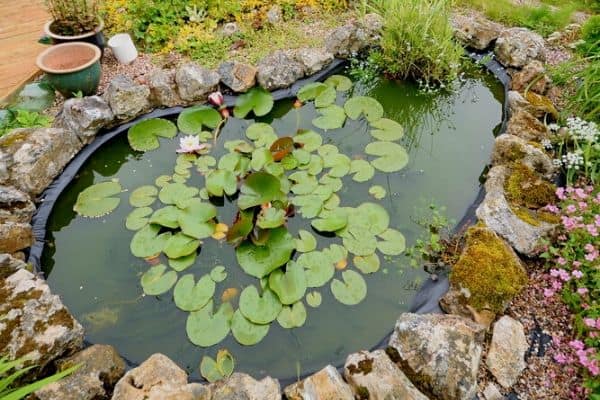
10 POND MISTAKES TO AVOID
1. Choosing the wrong location
Many people make the mistake of building a pond in a far corner of the backyard where no one can see it.
When the pond isn’t visible, it’s easily forgotten about and usually ends up overgrown with algae and weeds.
If you live in an area with hot summer temperatures, it’s best if your pond is located in an area that receives morning sun and afternoon shade so that the pond water doesn’t heat up too much.
Tree roots and leaves falling into the pond can be a real nuisance for pond owners, so it’s best to build your pond away from trees, especially deciduous trees.
It’s also best to avoid building a pond in a low lying spot that can flood during periods of heavy rain.
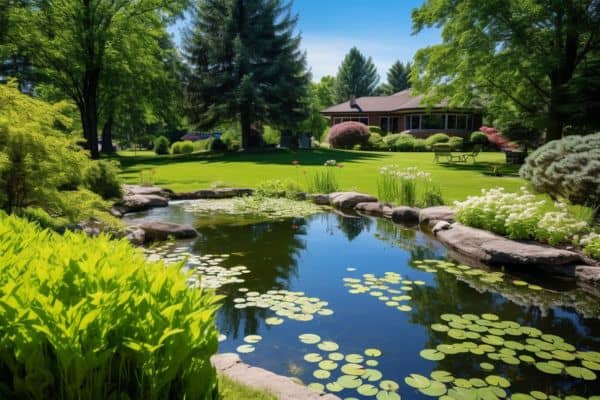
2. Making the pond too shallow
If your pond is too shallow, the water can heat up quickly during hot summer weather, which is dangerous for fish.
Shallow ponds will also need to be topped up regularly during summer due to evaporation.
In areas with very cold winter temperatures, ponds need to be at least 4 feet (120 cm) deep so that the water doesn’t freeze solid.
Ensuring that your pond is deep enough will also protect your fish from predators like birds and cats.
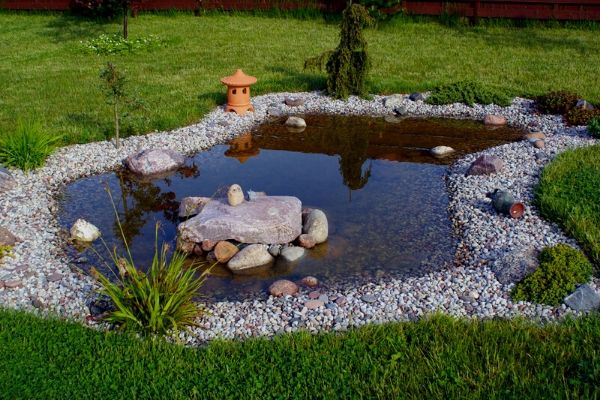
3. Building the pond too small
Building your pond too small means you can only have a small number of plants and fish in the pond.
It doesn’t take long for pond plants to spread out, especially floating plants like water hyacinths and water lettuce
, so if your pond is small you’ll have to trim them back regularly.
If you have fish in a small pond you’ll have to closely monitor their numbers and de-stock when the pond becomes overcrowded.
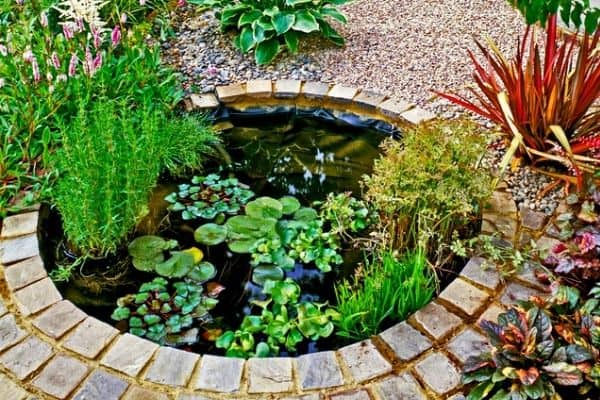
4. Creating steep edges
Many first time pond owners create a pond with steep edges, which makes it hard to stack rocks around the inside edge of the pond and there’s no ledges for pond plants.
Ponds with steep edges are also difficult for frogs and birds to access the water.
5. Using untreated water
You can use tap water to fill up a new pond but you’ll need to let the water sit for a couple of days to allow the chlorine to dissipate.
When topping up the pond it’s important to use a dechlorinator to remove the chlorine or allow the water to sit in buckets for a day or two before adding it to the pond.
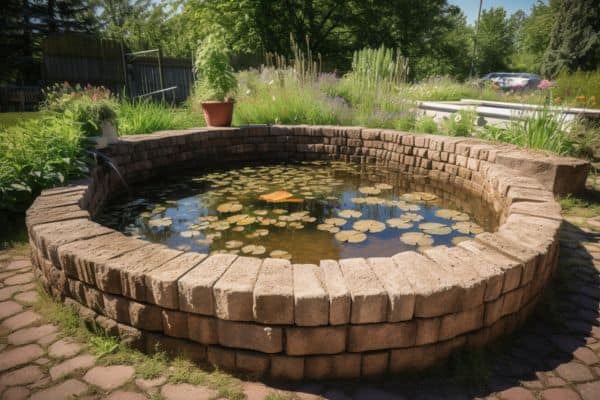
6. Adding the fish too soon
After you finish building your pond, it’s important to let the water sit for a few weeks to allow the natural ecosystem of the pond to build up before adding fish.
You can add beneficial bacteria to the pond water to help this along.
7. Forgetting about aeration
Installing a fountain, pond spitter
or waterfall helps to infuse oxygen into the pond, which is essential for plants, fish and beneficial bacteria that need oxygen to live.
If you notice that your pond smells like rotten eggs or your fish are gasping at the surface of the pond, it’s a sign that your pond is low on oxygen and you need to add aeration.
Aeration also helps to reduce mosquitoes, stabilize the pond temperature and keep the pond water clear and free of algal blooms.
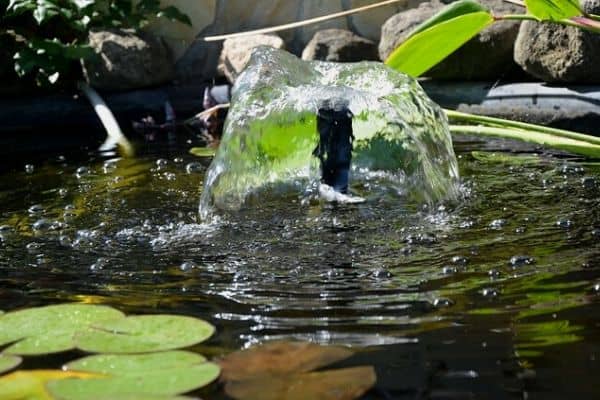
8. Not providing shade
If your pond is located in full sun, you’ll need to provide shade to protect the fish, reduce algae overgrowth and prevent the pond water heating up too much.
You can install a shade sail over the pond or use pond plants to cover at least one third of the surface of the pond.
Some good choices include water lilies, lotus
and water lettuce
. [1]
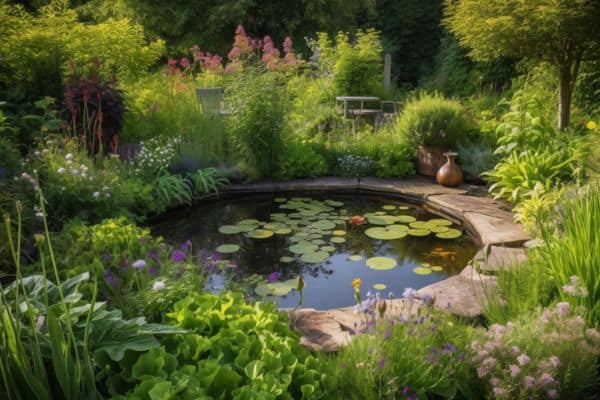
9. Underestimating the ongoing maintenance
Many people don’t realize the amount of work it takes to keep a pond healthy and functioning.
Removing leaves and other debris that falls into the pond is something you’ll need to do regularly to reduce scum and muck building up in the pond.
You can use a long handled net for this or install a pond skimmer
if you don’t have time to do it manually.
You can also add muck reducer tablets to the pond to help keep it clean.
If you live in an area with very cold winter temperatures, you’ll need to store your pump and filter somewhere that they won’t freeze and drain the water out of the pipes before winter so that they don’t crack.
If your pond freezes over, you’ll need to make a hole in the ice to allow carbon dioxide and other gases to escape.
You can use a hot saucepan to make a hole in the ice or use a pond de-icer.
Plants like water lilies and lotus can be cut back and moved to the bottom of the pond to overwinter but tropical plants will need to be brought indoors to survive the winter.
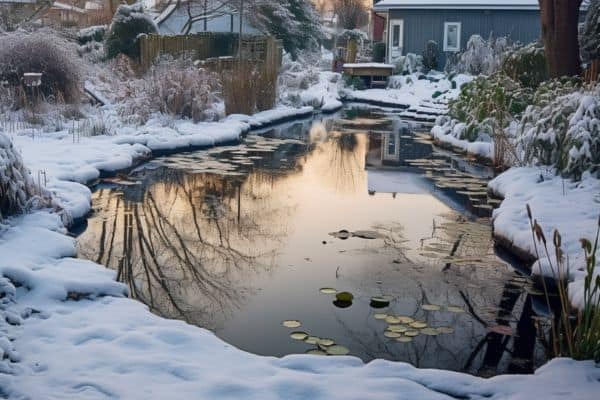
10. Not testing the water
If you have fish in your pond you’ll need to test the water regularly using a pond test kit to make sure that the pH, nitrates, nitrites and ammonia are within a healthy range.
If the test results show that there are elevated levels of a toxin in the pond water, you can take steps to fix it before your fish are affected.
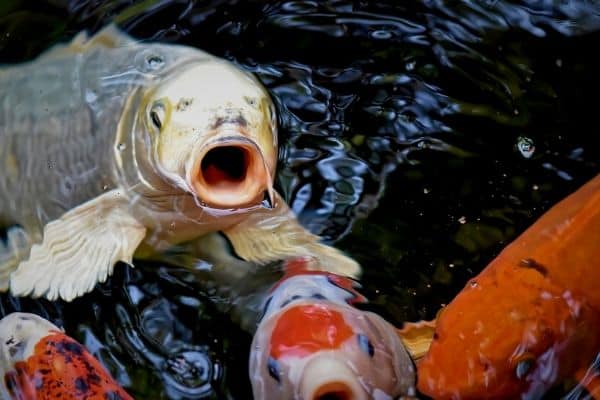
So there are 10 common pond mistakes, so you know what to avoid.
Building a new backyard pond is a lot of work, but with some careful planning you can avoid most of these problems.
RELATED ARTICLES
- Garden Pond Aeration
- 10 Best Bog Plants For Ponds
- 7 Beautiful Pond Edging Ideas
- 10 Ways To Decorate Your Pond
- Preformed Ponds Vs Pond Liners
Can you think of any other pond mistakes that beginner pond owners should be aware of? Let me know in the comments below.
Are you on Pinterest? I have boards dedicated to Garden Ponds and Pond Tips that you may find helpful.
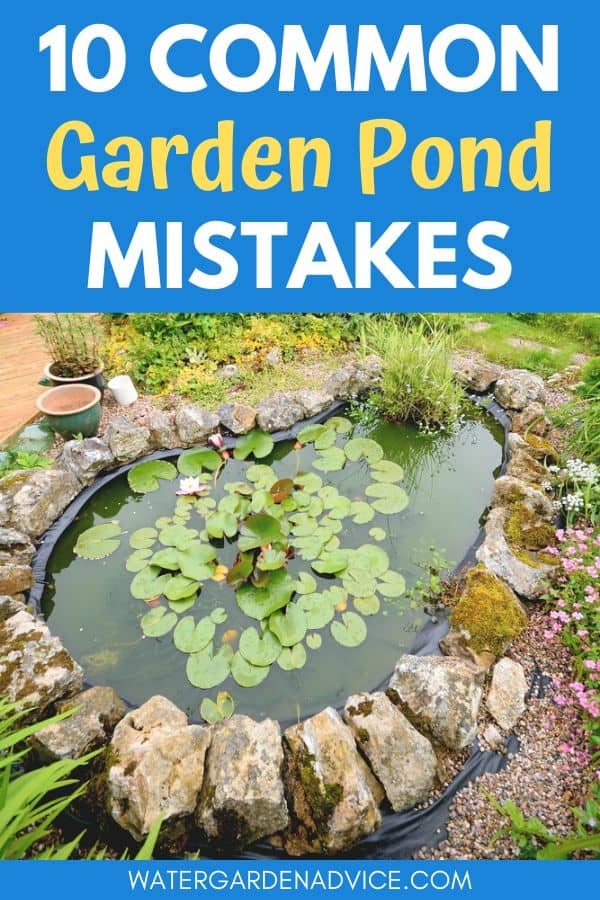
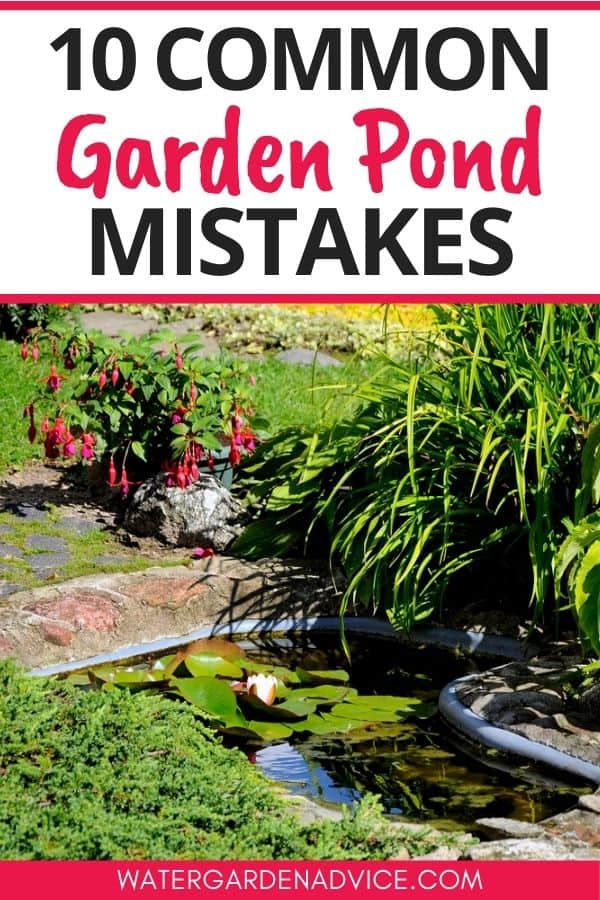
Also, check out the Must-Have Pond Products page where I list the essential pond products to make life as a pond owner much easier!

